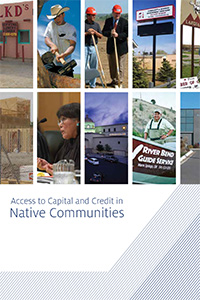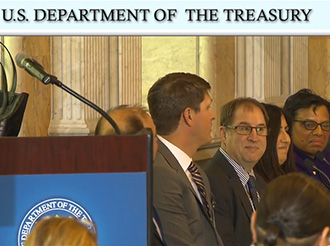I feel like I am a pretty good co-worker. I do my best to put my coffee mugs in the dishwasher. I refill the copy paper. But I admit it can be a bit annoying to share an office wall with me. Sometimes I listen to the soundtrack to the Broadway hit “Hamilton” a bit too loud.
Earlier this week, I got the chance to do something that would make any “Hamilton” geek happy. I visited the United States Treasury!
OK, I wasn’t there as a tourist — even though I must say the building is among the most beautiful in DC. I was there to participate in a roundtable discussion: Native Access to Capital, Credit and Approaches that Increase Financial Security. (Watch a recorded video of the discussion here.)
I was humbled to be seated at the same table as the Native American Finance Officers Association (NAFOA), the National Congress of American Indians (NCAI), Citizen Potawatomi Community Development Corporation and other prestigious organizations. We were all there to discuss the findings of a landmark report: “Access to Credit and Capital in Native Communities.” The CDFI Fund partners with the Native Nations Institute to generate this crucial report. (Download the report from the CDFI Fund website here.)

We live in the era of data-driven decision-making. Bringing capital to Indian Country to create more housing and more jobs is difficult. We spend a lot of time overcoming negative, ill-informed perceptions of Indian Country. This report gives us data. We can use this data to set our conversations with lenders and investors on a firm foundation of reality. We can acknowledge that we have a very long way to go. But we can show that Indian Country is on a growth trajectory, and infusing more capital will move that trend in the right direction.
Travois is grateful to the U.S. Treasury for hosting the meeting. We learned useful lessons from our partners around the table. We encourage more dialogue between practitioners and public servants in the future.
Related posts:


